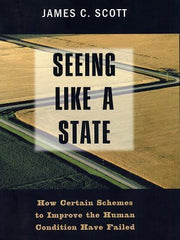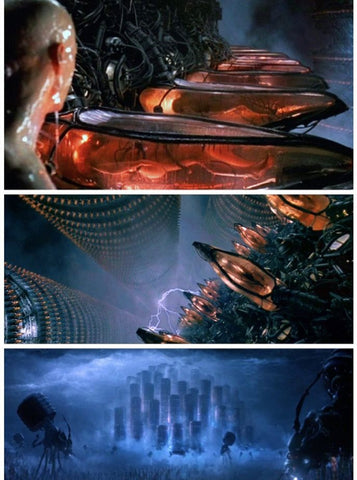The metaverse has been a hot topic these days, and in our recent podcast, Raoul Pal defined it as "digital mobility."
So what exactly is it? Why is it so important? How will the metaverse emerge? How does it relate to the real world and our identity?
And what is the role of Ethereum in this whole process?

Emergence of the Metaverse:
As the NFT mania has grown, so has the conversation around the "metaverse" where everyone talks about it but no one tries to meaningfully define it.
This paper provides an actionable proposal for what the Metaverse actually is.
The "metaverse" will be a combination of many different layers and technologies, but all components of the metaverse will adhere to a single shared source of truth.
The metaverse will consist of objects, all of which must know that all other objects exist. From this, we can create a ledger of all objects in the known metaverse, along with their shared history of interactions and stories.
Understanding the metaverse requires breaking it down into its component parts and then reassembling it into a narrative of what "it" is.
Let's take a deeper look.
Building the metaverse from the bottom up
The Metaverse is the new organizational structure of the digital age, but we've seen it before! Before we define the metaverse, we need to define its previous iteration.
From a nation-state perspective
I recently read the book Seeing like a State, and it illustrates what it's like to look at a nation-state.
A nation-state is a unity of incentives and aspirations that uses the people within to fulfill those aspirations.

Nation-states are the central registry for everything worthy of registration in their domain. A nation-state likes order and therefore uses the system of order to explain everything in which it has power.
We have many phenomena of order that define our lives through the aspirations of the nation state:
It's not just serializing people and their businesses.
According to the book Seeing like a State, the orderly state structure we currently have is based on previous attempts to calculate the value of land administered by the taxman. Traditionally, land would be valued and measured based on the yield of its crops, and nation-states would employ surveyors to properly value land based on the value of crops that the land might yield. Good fertile land will be taxed more than dry land because the central accounting body wants to see fairness.
Early agricultural accounting systems mapped the land and the types of crops that grew on it. Potatoes are planted every 6 inches, which means an acre can grow 120,000 potatoes and will generate $50,000 a year in tax revenue for the state.
The nation-state works hard to ensure that it accounts for all the value of what it rules, as this will result in high taxes for the state.
This is how a wild, diverse forest becomes an ecology of a specific type of plant, a forest becomes a grid of trees suitable for growing timber, and a wilderness becomes an ordered pasture with only one crop. The chaotic, unstable land becomes a grid of streets, all streets with numbers.
Nation-states need to keep things organized and well-documented in order to optimize their ability to coordinate resources. A nation-state's central registry needs to know about all the valuable resources within its control in order to be able to properly extract taxes and develop the state.
Nation-states want to be accountable for everything, which is good for the health of the defined system, but it comes at the expense of individual liberties. Nation states reduce all people and their property to a single serial number for tax purposes, which is why government overreach is always opposed.
That's because if the nation-state gets its way, the long-term conclusion of the nation-state's desire might be something like this:

Art is always ahead of human consciousness
Nation-states are built on central intelligence about their own state and the world around them.
It is seeking to "understand" the world around it and extract its resources.
This concept explains why nation-states often oppress indigenous cultures. Nomads are hard to pay taxes because you can't find them in a specific place, the resources they produce and consume are obscure and hard to track because they are produced out of order. Nation-states don't know how to value goods produced or consumed "in the wild", aka "unaccounted for."
Indigenous cultures are not inherently well integrated with nation-states. Indigenous people are more in harmony with nature, while nation-states want to consume nature's disorder and export orderly civilization. We see nation-states confining indigenous cultures to smaller and smaller lands as nation-state aspirations begin to revolve around non-nation-state cultures occupying and ruling the world.
This has become a major flaw in the current world social structure and one of the main sources of global social stress and inequality.
Cultural biases about the legitimacy of identities or objects in their domains must be eliminated if larger and more just human organizational structures are to emerge.
From a protocol point of view
Cryptoeconomic systems are capable of managing a multitude of responsibilities previously borne by nation-states, while retaining the right of individuals to express their wishes to the greatest extent possible in the world around them.
Ethereum is a new kingdom, a kingdom that exists in the cloud, it is bottom-up, not forced from top-down.
While the participation mechanism is different, we see that Ethereum also facilitates similar functions of nation-states.
Ethereum also likes ordered and serialized things, in fact, if you want to store anything on Ethereum, you have to obey the laws of the EVM.
Want to settle a transaction on Ethereum? You need an Ethereum address.
Want an identity on Ethereum? You need an ENS domain name.
Want to deploy a token? You need a token contract address.
Want to buy NFTs? Your specific Ethereum address will need to interact with a specific contract address, so Ethereum can know which part of the ledger to update.
Ethereum is a protocol for serializing objects into the metaverse. You can initialize the state of an NFT by deploying smart contract information to Ethereum.
Ethereum does not need to hire land surveyors or the Treasury. It does not require humans to understand the value of resources within its domain.

Ethereum knows: address location, amount of ETH, amount of tokens owned, and value of tokens owned
Since Ethereum is an internet protocol, it will never knock on the door for taxation. An important improvement of Ethereum as an organizational system is the cost-effectiveness of keeping the ledger alive. By removing itself from the material need for maximum tax extraction, Ethereum only charges the minimum tax (like transaction fees) required to maintain the system.
Taxes are paid by those who actually pay the public fees for Ethereum’s new state members: those who secure and update the global ledger.
Object Persistence in the Metaverse
Whatever the metaverse is, it requires objects to have permanence.
Objects found in the metaverse must exhibit characteristics similar to objects in the real universe. Objects in the metaverse must collide with other objects in the metaverse. If they can't collide, are they still objects?
Metaverse objects must be aware of each other's existence, and in the digital world this can only be achieved when all objects are known by a single source of truth for all known items in the metaverse.
Nation states assign numbers to the objects they find within their domain, while individuals assign numbers to the objects they create on Ethereum. The process of "tokenization" manifests an object into the metaverse and makes it "known" to all other objects in the same plane of existence.
A universe was born.
This is the role of Ethereum as a new state. Register all objects and make them interact.
In DeFi we call it "money Lego", but in NFT we call it "metaverse".
"Writing" was invented when humans needed to record the ownership of objects in the real world, and this invention started the process of recording history.
The "metaverse" will arrive through a similar process. First, we will record the items that exist within it on a common ledger, and then we will build a digital civilization around this single source of truth (which we call the metaverse).
A general ledger is the foundational framework of the Metaverse.
Identity is the object
Like all previous organizational systems (religions, nation-states, etc.), Ethereum is made up of people. But so far, Ethereum has had a hard time really knowing who made it up.
Our human soul and human identity are not things that can be serialized and added to a blockchain. This is something unique to the real-space layer and will always be.
Nation states don't care about the human spirit, they give you an 8 digit social security number and move on, your identity is given to you by the nation state. Also, it expires every 6 years, and if you don't go to your nearest licensing office to renew it, you'll face consequences.
In the metaverse, you choose your identity.
Ethereum addresses are free for everyone, and addresses cannot be individually linked to one person. I personally use over 50 Ethereum addresses, many of which are shared with others.
While my personal activity is mostly limited to a handful of addresses, none of the fungible ERC20 tokens that pass through these addresses actually link a specific identity to that address.
Currencies and other fungible assets are designed to remove the link between owners and units. Money should be a non-political public utility that does not hold bias and does not accept any information from the entities that use it.
ERC20 tokens flow in and out of wallets smoothly because they are fungible, and once they are mixed with other tokens, they lose any form of traceability.
My Ethereum address holds ETH, UNI, AAVE, MKR or any other ERC20 token...just like thousands of other Ethereum addresses. Non-differentiated, non-unique. In fact, I can sell all the coins from one wallet and rebuy them from the other without any connection between the two wallets.
With privacy tools like Aztec coming online, I can even send ERC20 tokens from address A to address B without linking the two addresses, making those addresses useless for establishing identities.
The inherent neutrality of ERC20 tokens is a fantastic property that is necessary to create a fair and open global financial system, but it is not yet what is required to create a cloud-based digital nation.
This is where non-fungible tokens (NFTs) come in.
My Ethereum address holds Cryptopunk #1118, which is unique, and since there is only 1 Cryptopunk #1118, NFT, as an on-chain object, establishes an identity chain between all Ethereum addresses it contacts.

What Ethereum cares about is not the address itself, but the objects in the address.
ERC20 will not associate an identity with an Ethereum address, but ERC721 will do anything for it. As a true metaphysical being, people can travel through the metarealm and interact with the objects they encounter on their travels.
NFTs are specific, so ownership of NFTs speaks to specific tastes.
There are many wallets on the web, but this one belongs to me. No other wallet hosts this particular collection of artificially generated objects. NFTs are starting to form an identity shadow behind the private keys that control them.
Identity renaissance
Leave a comment